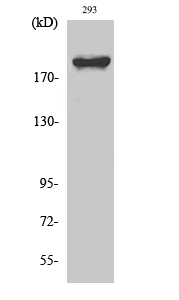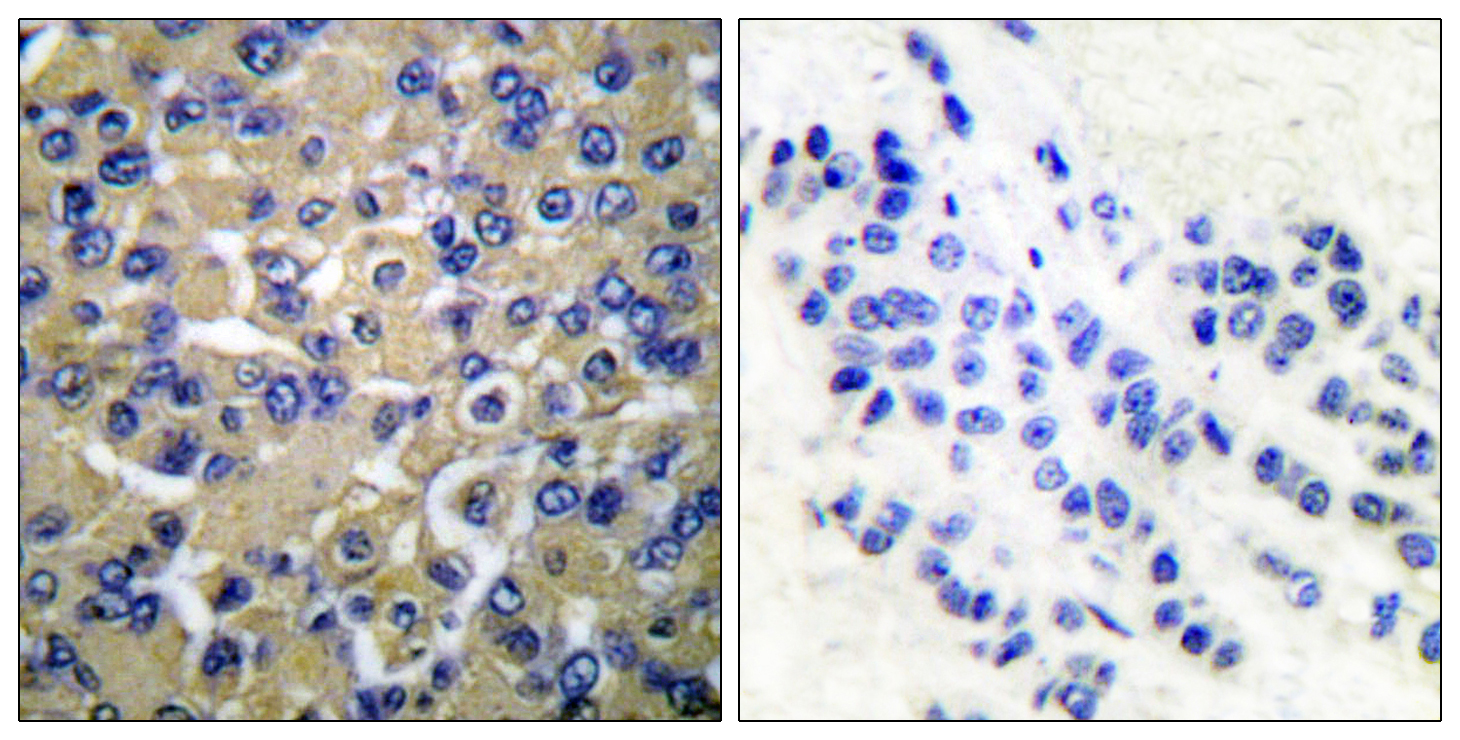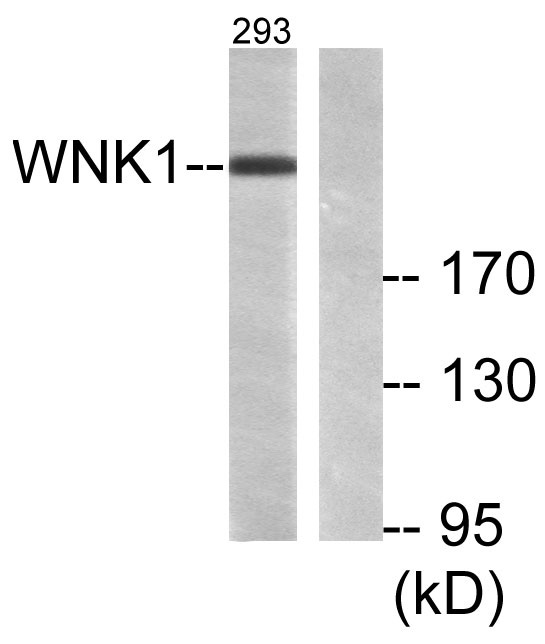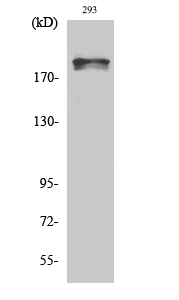WNK1 Polyclonal Antibody
- Catalog No.:YT4906
- Applications:WB;IHC;IF;ELISA
- Reactivity:Human;Mouse;Rat
- Target:
- WNK1
- Gene Name:
- WNK1
- Protein Name:
- Serine/threonine-protein kinase WNK1
- Human Gene Id:
- 65125
- Human Swiss Prot No:
- Q9H4A3
- Mouse Gene Id:
- 232341
- Mouse Swiss Prot No:
- P83741
- Rat Gene Id:
- 116477
- Rat Swiss Prot No:
- Q9JIH7
- Immunogen:
- The antiserum was produced against synthesized peptide derived from human WNK1. AA range:24-73
- Specificity:
- WNK1 Polyclonal Antibody detects endogenous levels of WNK1 protein.
- Formulation:
- Liquid in PBS containing 50% glycerol, 0.5% BSA and 0.02% sodium azide.
- Source:
- Polyclonal, Rabbit,IgG
- Dilution:
- WB 1:500 - 1:2000. IHC 1:100 - 1:300. ELISA: 1:10000.. IF 1:50-200
- Purification:
- The antibody was affinity-purified from rabbit antiserum by affinity-chromatography using epitope-specific immunogen.
- Concentration:
- 1 mg/ml
- Storage Stability:
- -15°C to -25°C/1 year(Do not lower than -25°C)
- Other Name:
- WNK1;HSN2;KDP;KIAA0344;PRKWNK1;Serine/threonine-protein kinase WNK1;Erythrocyte 65 kDa protein;p65;Kinase deficient protein;Protein kinase lysine-deficient 1;Protein kinase with no lysine 1;hWNK1
- Observed Band(KD):
- 230kD
- Background:
- This gene encodes a member of the WNK subfamily of serine/threonine protein kinases. The encoded protein may be a key regulator of blood pressure by controlling the transport of sodium and chloride ions. Mutations in this gene have been associated with pseudohypoaldosteronism type II and hereditary sensory neuropathy type II. Alternatively spliced transcript variants encoding different isoforms have been described but the full-length nature of all of them has yet to be determined.[provided by RefSeq, May 2010],
- Function:
- catalytic activity:ATP + a protein = ADP + a phosphoprotein.,caution:Cys-250 is present instead of the conserved Lys which is expected to be an active site residue. Lys-233 appears to fulfill the required catalytic function.,caution:PubMed:2507249 describes a peptide sequence containing a GlcNAc glycosylated Ser in position 164 while it is an Arg residue according to others.,cofactor:Magnesium.,disease:Defects in WNK1 are a cause of pseudohypoaldosteronism type II (PHAII) [MIM:145260]. PHAII is an autosomal dominant disease characterized by severe hypertension, hyperkalemia, and sensitivity to thiazide diuretics which may result from a chloride shunt in the renal distal nephron.,enzyme regulation:By hypertonicity. Activation requires autophosphorylation of Ser-382. Phosphorylation of Ser-378 also promotes increased activity.,function:Controls sodium and chloride ion transport by inhibiti
- Subcellular Location:
- Cytoplasm .
- Expression:
- Widely expressed, with highest levels observed in the testis, heart, kidney and skeletal muscle. Isoform 3 is kidney-specific and specifically expressed in the distal convoluted tubule (DCT) and connecting tubule (CNT) of the nephron.
- June 19-2018
- WESTERN IMMUNOBLOTTING PROTOCOL
- June 19-2018
- IMMUNOHISTOCHEMISTRY-PARAFFIN PROTOCOL
- June 19-2018
- IMMUNOFLUORESCENCE PROTOCOL
- September 08-2020
- FLOW-CYTOMEYRT-PROTOCOL
- May 20-2022
- Cell-Based ELISA│解您多样本WB检测之困扰
- July 13-2018
- CELL-BASED-ELISA-PROTOCOL-FOR-ACETYL-PROTEIN
- July 13-2018
- CELL-BASED-ELISA-PROTOCOL-FOR-PHOSPHO-PROTEIN
- July 13-2018
- Antibody-FAQs
- Products Images

- Western Blot analysis of various cells using WNK1 Polyclonal Antibody. Secondary antibody(catalog#:RS0002) was diluted at 1:20000

- Immunohistochemistry analysis of paraffin-embedded human breast carcinoma tissue, using WNK1 Antibody. The picture on the right is blocked with the synthesized peptide.

- Western blot analysis of lysates from 293 cells, treated with EGF 200ng/ml 30', using WNK1 Antibody. The lane on the right is blocked with the synthesized peptide.


